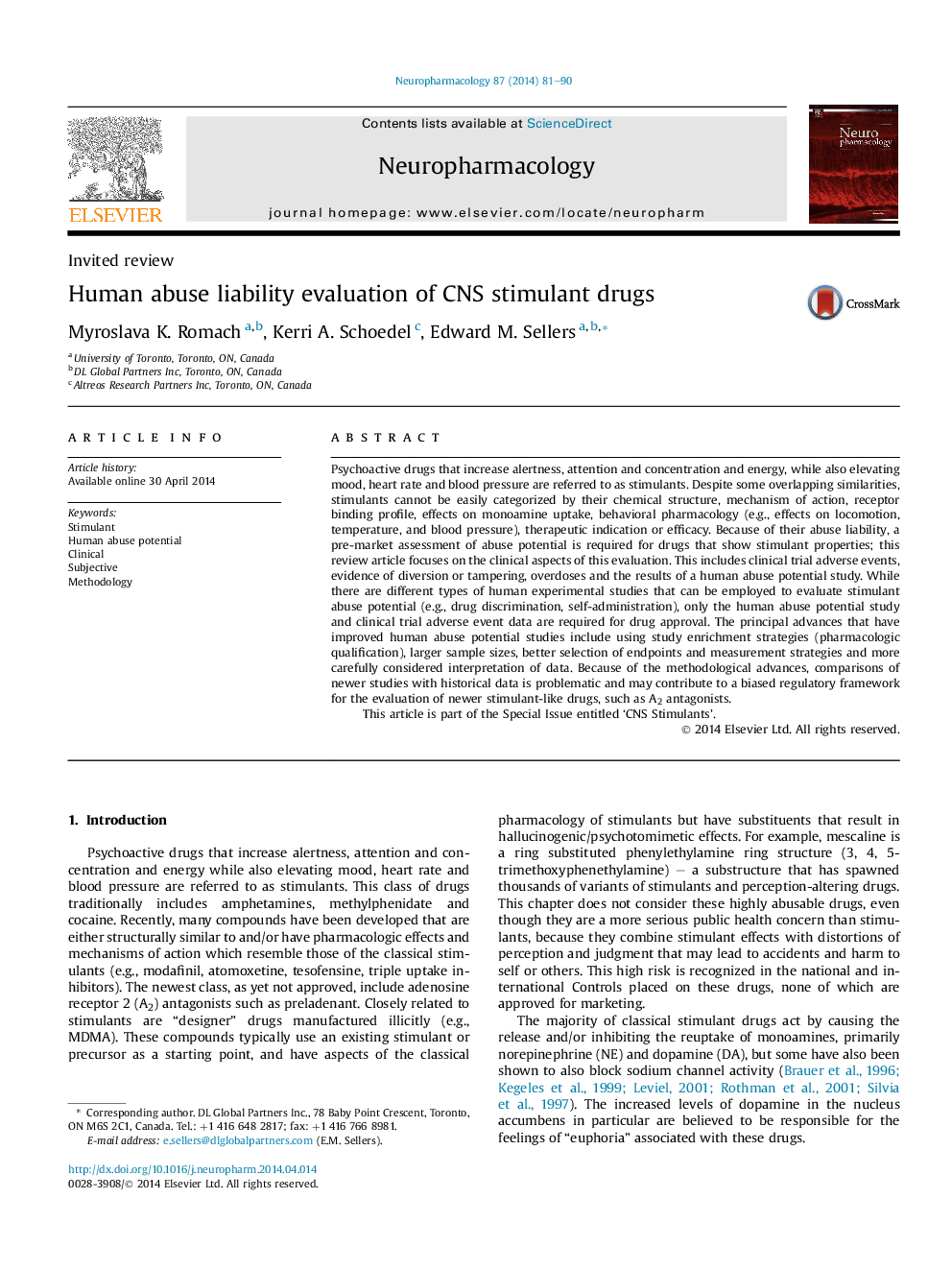| کد مقاله | کد نشریه | سال انتشار | مقاله انگلیسی | نسخه تمام متن |
|---|---|---|---|---|
| 5814345 | 1556627 | 2014 | 10 صفحه PDF | دانلود رایگان |

- Human abuse potential methodology.
- Best dependent variables to predict abuse liability.
- Advances in abuse assessment methodology.
- Scheduling decision making for stimulants.
Psychoactive drugs that increase alertness, attention and concentration and energy, while also elevating mood, heart rate and blood pressure are referred to as stimulants. Despite some overlapping similarities, stimulants cannot be easily categorized by their chemical structure, mechanism of action, receptor binding profile, effects on monoamine uptake, behavioral pharmacology (e.g., effects on locomotion, temperature, and blood pressure), therapeutic indication or efficacy. Because of their abuse liability, a pre-market assessment of abuse potential is required for drugs that show stimulant properties; this review article focuses on the clinical aspects of this evaluation. This includes clinical trial adverse events, evidence of diversion or tampering, overdoses and the results of a human abuse potential study. While there are different types of human experimental studies that can be employed to evaluate stimulant abuse potential (e.g., drug discrimination, self-administration), only the human abuse potential study and clinical trial adverse event data are required for drug approval. The principal advances that have improved human abuse potential studies include using study enrichment strategies (pharmacologic qualification), larger sample sizes, better selection of endpoints and measurement strategies and more carefully considered interpretation of data. Because of the methodological advances, comparisons of newer studies with historical data is problematic and may contribute to a biased regulatory framework for the evaluation of newer stimulant-like drugs, such as A2 antagonists.This article is part of the Special Issue entitled 'CNS Stimulants'.
Journal: Neuropharmacology - Volume 87, December 2014, Pages 81-90